
Local conservation volunteers are dedicated to protecting and restoring nature
From Moehau at the tip of the Coromandel Peninsula to Te Aroha in the south, diverse ecosystems are home to a wide variety of wildlife, including many native, threatened and at-risk species.
Our rohe (area) is also home to a vibrant network of conservation groups, many collaborating with tangata whenua and the Department of Conservation (DOC) to protect the natural environment so our taonga (treasure) species can thrive.
Comprised of community volunteers, iwi/hapū and private landowners, local conservation groups contribute thousands of volunteer hours each year. Volunteers are suppressing predators, undertaking weed control, restoring native plants in areas of the bush, wetlands, and coast – and so much more.
While the Department administers 38% of the total land area on the Coromandel Peninsula, DOC staff have identified high biodiversity areas where work takes priority. This includes Kopuatai Peat Dome, Pūkorokoro/Miranda, Ōpoutere sandspit, Otahu Ecological Area, Moehau, Papakai and nine predator free islands. Outside of these areas, dedicated community groups lead conservation efforts.
DOC Community Rangers Shania Hills (Hauraki) and Cheyenne Walmsley (Coromandel) say conservation is a team effort.
“DOC has a key role in protecting the ecosystems and species that make Aotearoa New Zealand unique. We couldn’t do this without the support of conservation groups, iwi, and other organisations. All our actions contribute to protecting and restoring nature,” says Shania.
“Coromandel brown kiwi populations are flourishing. Rare species including Coromandel striped gecko, Archey’s and Hochstetter’s frog and unique ecosystems are getting protection thanks to the dedicated pest control efforts from local conservation groups.” says Cheyenne.
Through community engagement, these groups help build a sense of responsibility and connection to the land, leading to better conservation outcomes and sustainable practices. Collaborating means sharing local knowledge and resources to effectively manage public conservation land for future generations.
We’d like to extend our gratitude to our communities and iwi/hapū for their ongoing dedication to protect our native wildlife and their habitats. The progress of conservation in Hauraki-Coromandel is due to the support and contribution of many – some of them pictured here.
How you can get involved in local conservation
- Learn more about predator control – predatorfreenz.org
- Donate a trap to a conservation group – giveatrap.org.nz
- Join a conservation group – volunteer your time or skills
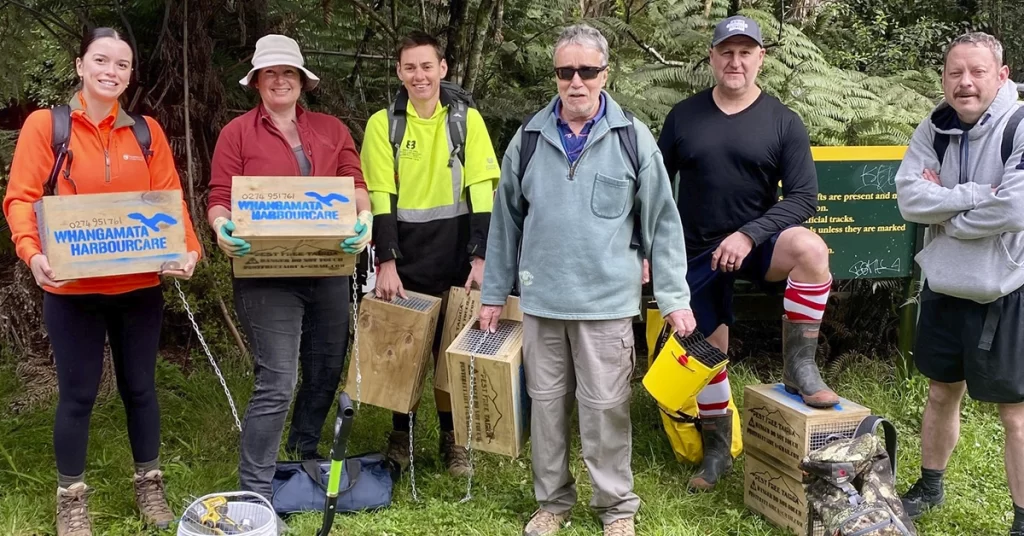
Whangamatā Harbour Care recently added 10 new DOC200 traps to the Wentworth Falls track with support from DOC Hauraki Community Ranger, Shania, and Predator free Hauraki-Coromandel Community Trust Ranger, Bex. Credit: Dave Gould, WHC
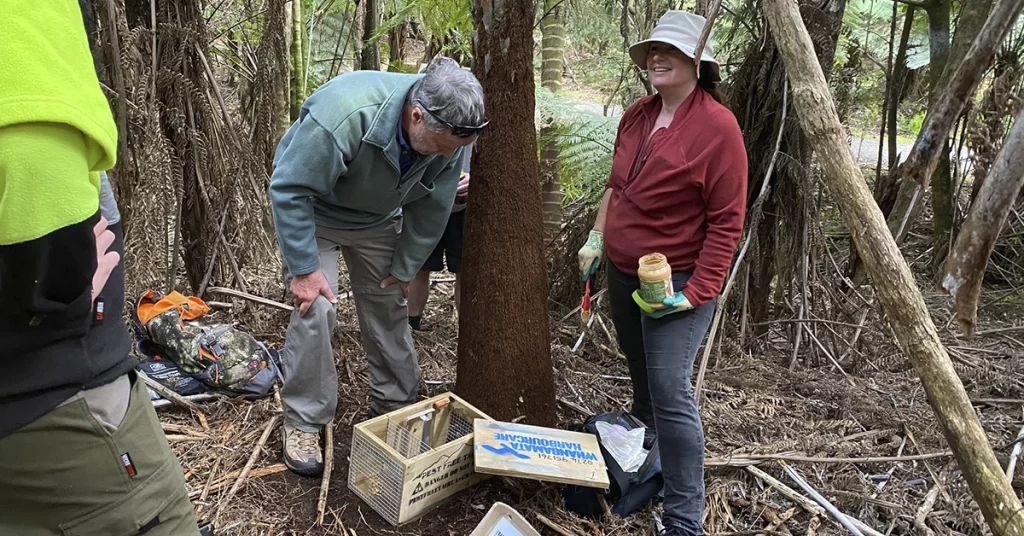
Roselle Gould (Whangamatā Harbour Care) is the superstar behind all things trapping in Whangamatā – keen to join? Email: harbourcarepest@gmail.com Credit: DOC

Credit: TMBC Thames Mountain Bike Club volunteers doing the hard mahi carrying and checking traps up the Karaka track, Thames. Going uphill with the mountain bike isn’t much faster than walking but is totally worth it on the way down! Contact thamesmtb@gmail.com if you are keen to get involved.

Credit: ORRA Ōpoutere Ratepayers and Residents Association (ORRA) volunteers Grant Stuart, Stuart Farmer and Rachel Lang ready to deploy DOC200s.
ORRA is looking for volunteers to join the team, if you are interested, email Victoria Spence at opouteretrapping1@gmail.com

Credit: TCKC
1. Tiana Smallfield and Collette Wise have been trapping for TCKC for more than 3 years, starting when Collette was a teenager. 2. Jon and Susan share a line. Susan’s husband and two daughters help out and amazingly, Jon Ballentine has been checking the same trapline for more than 20 years!

3. This is only half TCKC’s team of volunteer trappers! With the help of more than 60 volunteers TCKC has removed a total of 27,000 predators!

Credit: Otama Reserves Group
- Otama Reserves Group (ORG) Planting Bee at Otama Wetland.
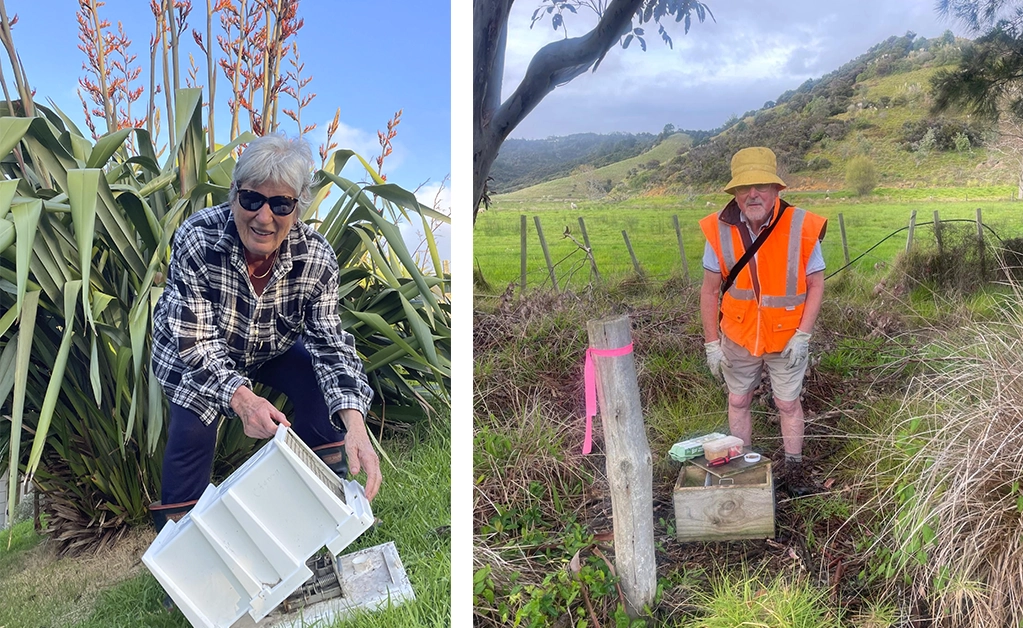
Credit: Otama Reserves Group
2. Longtime trapper Jackie traps the Kahurangi line from around the eastern beach front to the village pa site. She has continued trapping after the passing of her husband Vince and has seen a marked increase in the birdlife around Otama bay.
3. Knowledgeable trapper John now traps the oldest trap line in Otama, the Tahuahua sand dune loop. This line protects ground nesting birds along the dunes.

Credit: Moehau Environment Group – 1. It takes a lot of traps to protect kiwi from stoats. Dawn Whitehouse helping to build stoat traps in 2004 for Moehau Environment Group (MEG).

Credit: Moehau Environment Group
2. Today we still need to replace or put in more traps. MEG Field team worker Peri Mawson carrying stoat traps into the bush. Credit: Peri Mawson.
3. Success! Volunteer trappers Brian and Tania Sorensen with stoat capture. Credit: Paul Johnson.

Caption: Pest Free Tairua has a mix of backyard and public conservation land trapping – they even make their own BT200/DOC200 and rat traps! Credit: Pest Free Tairua.

Sasha [PFHCCT] audits a remote trap deep within Mahakirau Sanctuary, contributing to the Kiwi I te Kāinga programme – a Jobs for Nature initiative preparing for the return of kiwi to the Hauraki Coromandel mainland.
Photo credit: Sara Smerdon.

Mahakirau volunteers Raine, Jeff, and Sara join Goodnature scientist Dr Christine [with her kiwi dog, See], celebrating innovation in action at the successful completion of a new lure trial aimed at improving stoat-targeted A24 Autotraps – ideal for predator control in New Zealand’s backcountry. Photo credit: Jasper White [participating volunteer from College of the Atlantic, Maine USA]

The elusive Northern Striped gecko (Toropuku inexpectatus), a rare gem of Mahakirau, continues to flourish thanks to dedicated habitat protection and predator control. The Northern Striped gecko are Threatened – Nationally Vulnerable. Photo Credit: Sara Smerdon.
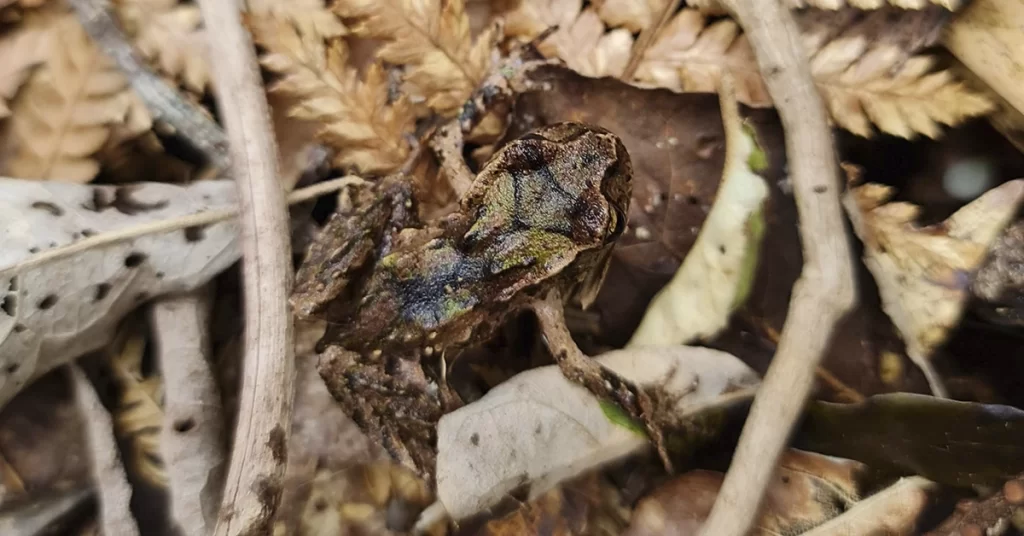
Archey’s frog (Leiopelma archeyi), one of the world’s rarest amphibians, finds refuge in the pristine forests of Mahakirau. Archey’s frogs make a tasty meal for rats, mice, pigs, stoats, hedgehogs, possums, cats and introduced frogs, so their presence at Mahakirau is a testament to ongoing conservation efforts. Photo Credit: Sara Smerdon

New Zealand dotterel, Tūturiwhatu at Cooks Beach. The ongoing presence of these birds is an indicator of much effort from not only the local trapping group, Purangi Conservation Trust, but also council traps near the dunes. Purangi Conservation Trust receives progress reports from Alison Henry, the local dotterel watcher. Photo Credit: Peter Drury.

Ngāti Hei Rangatahi Ranger, Indigo, releases his first kiwi with ‘seasoned’ kiwi releasers Craig and Solomon inside the Summit Forests New Zealand biodiversity block, managed by the Project Kiwi Trust. From left to right: Craig Balsom, Indigo Tule, Solomon Williams. Photo Credit: Project Kiwi Trust, Paula Williams.
Ngāti Hei Rangatahi Ranger, Indigo, releases his first kiwi. The kiwi was named by Indigo ‘Tanekaha Chilli Bob’. Photo Credit: Project Kiwi Trust, Paula Williams.

Ngāti Hei Rangatahi Ranger, Solomon receives training and instruction from Craig. Photo Credit: Project Kiwi Trust, Paula Williams.
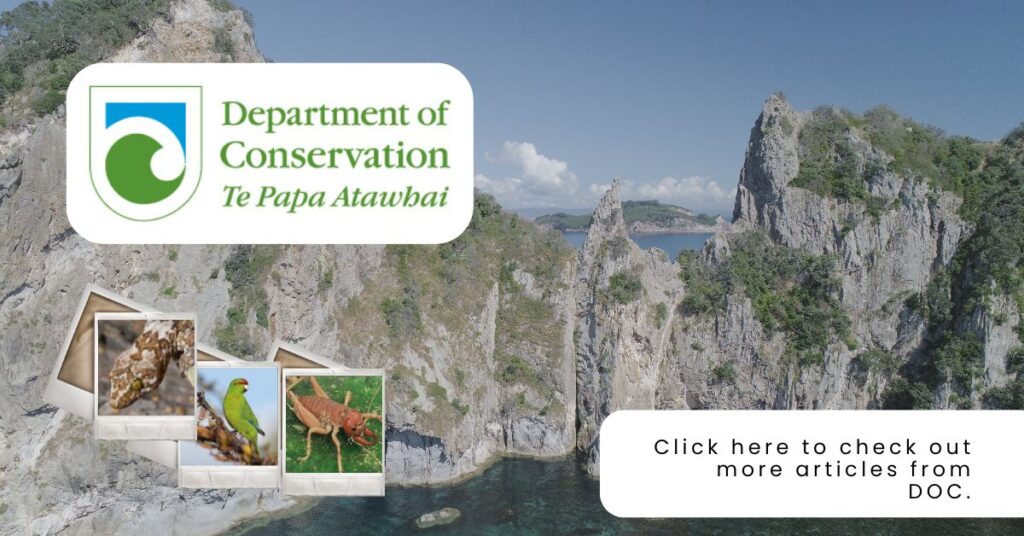
Coromind: Coromandel’s Collaborative Magazine

Help us take Coromind Magazine to new heights by becoming a member. Click here
Change the Weather for Your Business: Advertise with Us.
Advertise your business in the whole Hauraki Coromandel in the coolest Coromandel Art Magazine, from Waihi Beach/Paeroa /Thames up to the Great Barrier Island.
Advertise Smarter, Not Harder: Get in Touch






